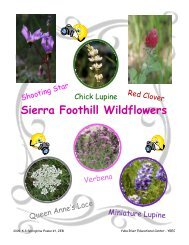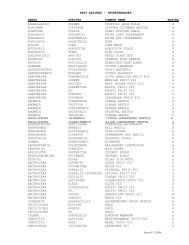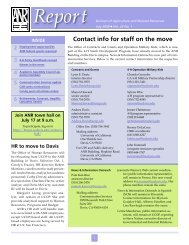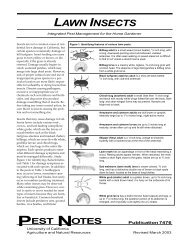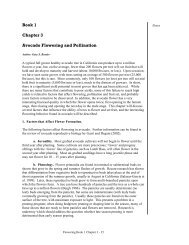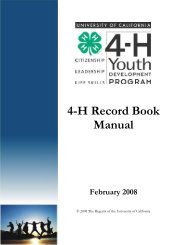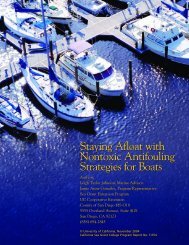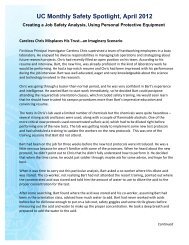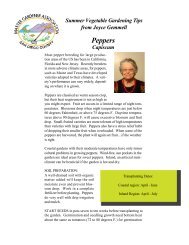Safflower in California - University of California Cooperative Extension
Safflower in California - University of California Cooperative Extension
Safflower in California - University of California Cooperative Extension
Create successful ePaper yourself
Turn your PDF publications into a flip-book with our unique Google optimized e-Paper software.
Editors’ summary:<br />
P.F. Knowles’ genetic resources legacy<br />
At the start <strong>of</strong> Paul Knowles’ career, safflower was only <strong>in</strong>cidentally grown <strong>in</strong> <strong>California</strong>. By<br />
virtue <strong>of</strong> his work, the crop was <strong>in</strong>troduced and improved and production and distribution became a <strong>California</strong><br />
<strong>in</strong>dustry. Central to this progress was germplasm acquisition, evaluation, conservation, and utilization carried out<br />
with Knowles’ vision and leadership. His achievements were far reach<strong>in</strong>g. Today, when crop genetic resources are<br />
paradoxically both <strong>in</strong>creas<strong>in</strong>gly recognized as highly valuable and yet confronted with ever greater risk <strong>of</strong> be<strong>in</strong>g<br />
lost, his story has valuable lessons.<br />
• Accessible, wide-rang<strong>in</strong>g genetic diversity is essential for the genetic improvement <strong>of</strong> a crop.<br />
Knowles recognized early on that safflower breed<strong>in</strong>g programs <strong>in</strong> the US had a narrow genetic base and<br />
this lack <strong>of</strong> germplasm was restrict<strong>in</strong>g progress.<br />
• Accessibility <strong>of</strong> genetic diversity requires <strong>in</strong>ternational exchange and collaboration.<br />
Knowles was supported, directly and <strong>in</strong>directly, <strong>in</strong> his efforts by his <strong>in</strong>stitution, several US agencies (e.g.,<br />
USDA, USAID, US Dept. <strong>of</strong> State), the UN Food and Agriculture Organization, and numerous academic<br />
and national researchers and <strong>in</strong>stitutions and private growers and sellers <strong>in</strong> the many countries <strong>in</strong> which he<br />
traveled. He <strong>in</strong>itiated and facilitated exchanges <strong>of</strong> germplasm, <strong>in</strong>formation, and scholars.<br />
• Collection <strong>of</strong> germplasm should be made across all environments and geographic regions <strong>in</strong> which the<br />
target species or crop grows.<br />
The mutations he reports and worked with for safflower fatty acid composition arose <strong>in</strong> very small populations<br />
<strong>in</strong> widely dispersed and unpredictable sites (India, Iran, Israel, Portugal, and Russia) and would never<br />
have been found without access to wide-rang<strong>in</strong>g germplasm collections.<br />
• Useful genetic diversity can be found <strong>in</strong> landraces <strong>of</strong> the crop from regions where it has a long history <strong>of</strong><br />
cultivation and <strong>in</strong> wild species closely related to the crop species.<br />
He reports useful genes and traits for cultivated safflower from landraces (e.g., the fatty acid composition<br />
mutations, flower color variants, growth habit, disease resistances, and male sterility) and from wild species<br />
(disease resistances).<br />
v



